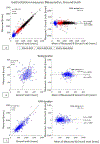What happens before the first step? A New Approach to Quantifying Gait Initiation Using a Wearable Sensor
- PMID: 31760316
- PMCID: PMC7015786
- DOI: 10.1016/j.gaitpost.2019.11.007
What happens before the first step? A New Approach to Quantifying Gait Initiation Using a Wearable Sensor
Abstract
Background: Walking is a volitional behavior that requires planning and initiation before a step is observed. Following a signal to begin walking, studies of gait initiation in specialized labs have identified three phases that occur during the transition from a standing position via anticipatory postural adjustment (APA) to the first step. Routine instrumented gait testing outside of the laboratory setting focuses on gait execution and does not include gait initiation measures.
Research question: Can a single IMU sensor be used for performing gait initiation evaluations outside the lab?
Methods: We recorded walking in young (N = 41) and older (N = 26) adults using an instrumented gait mat while they were wearing a 3D accelerometer on their lower back. Subjects were instructed to begin walking following an auditory signal. An algorithm was developed to extract the following measures from the acceleration signal: gait initiation time, measured from the start of the auditory cue to begin walking and ends at the heel-strike of the swing leg, time-to-APA (reaction time), APA duration and swing time (execution of the first step).
Results: Intraclass correlation coefficient analysis showed good to excellent agreement between gait initiation metrics obtained with the gait mat and the wearable sensor (mean 0.88, range [0.75-0.96]). Except for swing time, all measures were longer in the older subjects, compared to the young adults (p < 0.01).
Significance: Extracting gait initiation measures from routine instrumented gait testing may facilitate studies that can better determine the extent to which impaired gait planning and execution contribute to mobility impairments.
Keywords: accelerometer; aging; anticipatory postural adjustment; gait; inertial measurement units.
Copyright © 2019 Elsevier B.V. All rights reserved.
Conflict of interest statement
Declaration of Competing Interest Each of the authors has read and concurs with the content in the final manuscript. The material within has not been and will not be submitted for publication elsewhere except as an abstract. All authors made substantial contributions to all of the following: (1) the conception and design of the study, or acquisition of data, or analysis and interpretation of data, (2) drafting the article or revising it critically for important intellectual content, (3) final approval of the version to be submitted.
Figures



References
-
- Rajachandrakumar R, Fraser JE, Schinkel-lvy A, Inness EL, Biasin L, Brunton K, Mcllroy WE, Mansfield A, Atypical anticipatory postural adjustments during gait initiation among individuals with sub-acute stroke, Gait Posture. 52 (2017) 325–331. doi:10.1016/j.gaitpost.2016.12.020. - DOI - PMC - PubMed
Publication types
MeSH terms
Grants and funding
LinkOut - more resources
Full Text Sources
Miscellaneous

